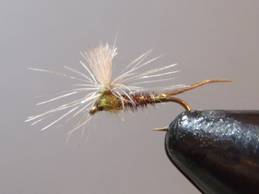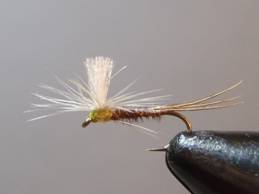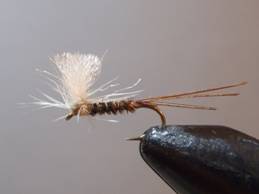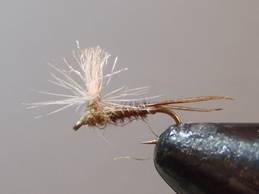PHEASANT TAIL MAYFLY PARACHUTE
Gary Borger noted "Parachute Adams would be the worlds most versatile and universal fly and most of anglers think of it as a dun imitation but in reality it is an emerger". So I modified my own Pheasant Tail Mayfly Cripple into a parachute pattern. It turned out to be another good looking fly for both human and trout eyes. It works from big rivers like Madison and Yellowstone to spring creeks in Paradise Valley. Also it can be tied in many different species of mayflies by simply changing hook sizes and dubbing color (see the chart below).
How to Fish:
This fly can be a "searching" pattern before/after and during the hatch as it represents various stages of mayfly hatch. At gin-clear flat waters of spring creeks this should be fished down-&-cross with the right angle of presentation. On freestone waters like Madison and the Yellowstone, this can be fished with upstream casting. Also it's very visible as a marker fly when trailing less visible dun patterns (such as dark CDC wing) or subsurface flies (emerging nymph patterns).
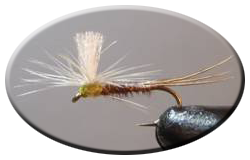
Materials:
- Hook: Standard dry-fly hooks
- Thread: MFC Premium 8/0 to match the species
- Tail & Abdomen: Pheasant tail fibers
- Ribbing: Fine copper or gold wire
- Post: Widow's Web fibers, white
- Hackle: Dun cock cape feather
- Body Dubbing: Superfine dub to match the species (built-up thread body for size 22 smaller)
Color & Size Chart
Species |
Size |
Thread & Dubbing Color |
Baetis |
20 – 24 |
dark olive |
PMD |
16 – 18 |
light olive |
Sulpher |
18 – 20 |
cream, light cahill |
Epeorus, Heptagenia |
14 – 16 |
light olive |
Trico |
20 – 22 |
rusty dun |
Calibaetis |
14 – 18 |
tan |
Step 1: Attach the thread to hook. Tie in a piece of wire then fibers of pheasant tail (number of fibers is depending on sizes of flies). Form a nice abdomen, reaching two-third of hook shank, tie off, and counter-wrap the wire.
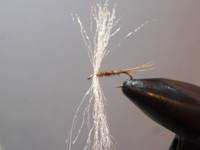
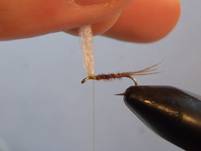
Step 2: Tie in the post material as if in a spinner wing with figure-8 wraps, lift up, then wrap the base of post.
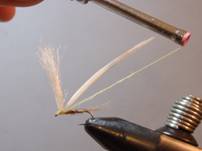
Step 3: Tie in a dun hackle at the base of the post.
Step 4: Lift the hackle upward out of your way, and form a thorax with figure-8 wraps around the post.
Step 5: Wrap the hackle once or twice around the post (depending of sizes and your intension; sparse for spring creeks & full for rivers). Whip finish. Trim the post for desired length.
|
|
PMD |
Baetis |
|
|
Calibaetis |
Trico |
For more great info, check out:
Beginning Fly Tying | Intermediate Fly Tying | Advanced Fly Tying.

